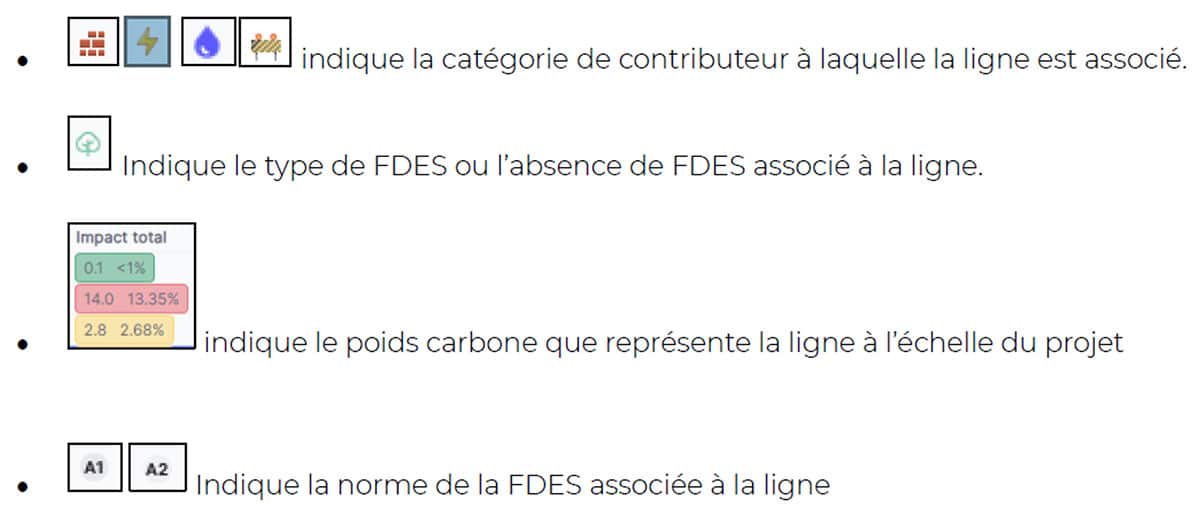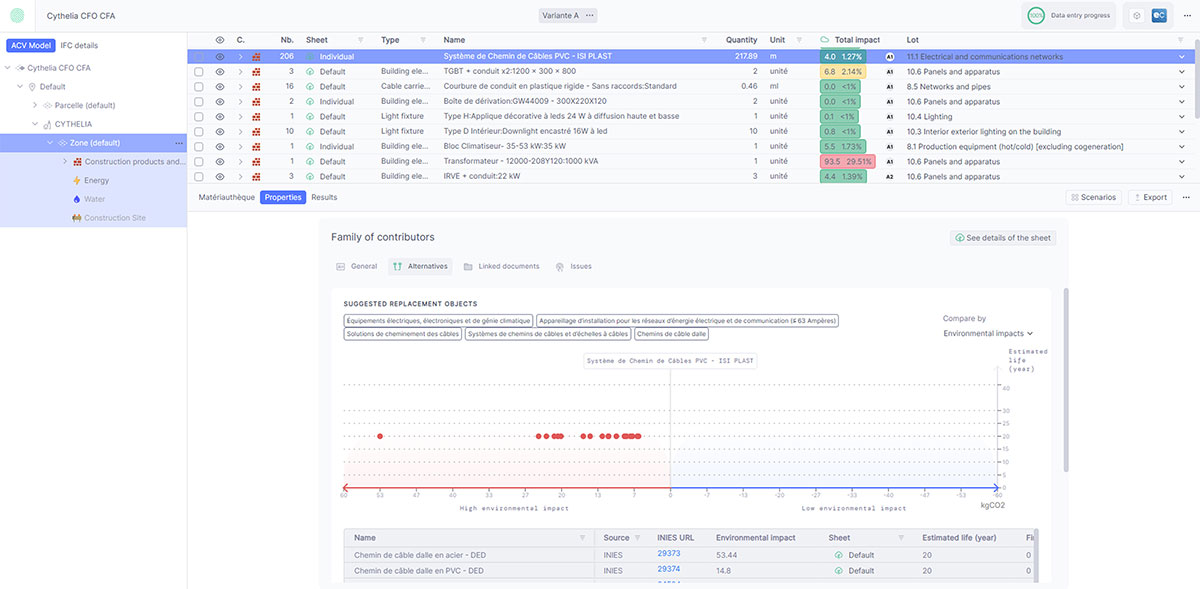
Individual Sheet
Established by manufacturers covering one or more commercial product references

Collective Sheet
This data is established by industry associations or manufacturers. It represents an average impact calculated for several product references, for example, for various products from the same range or for similar products from different manufacturers.

Configured Sheet
Established by the ministry in charge of construction to compensate for the lack of data on certain types of components. It has a relatively higher impact compared to individual and collective sheets. It is used if you do not have data.


Default Sheet
Established by the ministry in charge of construction to compensate for the lack of data on certain types of components. It has a relatively higher impact compared to individual and collective sheets. It is used if you do not have data.

Conventional or service data
Established by the ministry in charge of housing and that of ecological transition. These data are used to assign impact allowances to certain LCA lots or impacts of different services (energy, water, transport, etc.).


